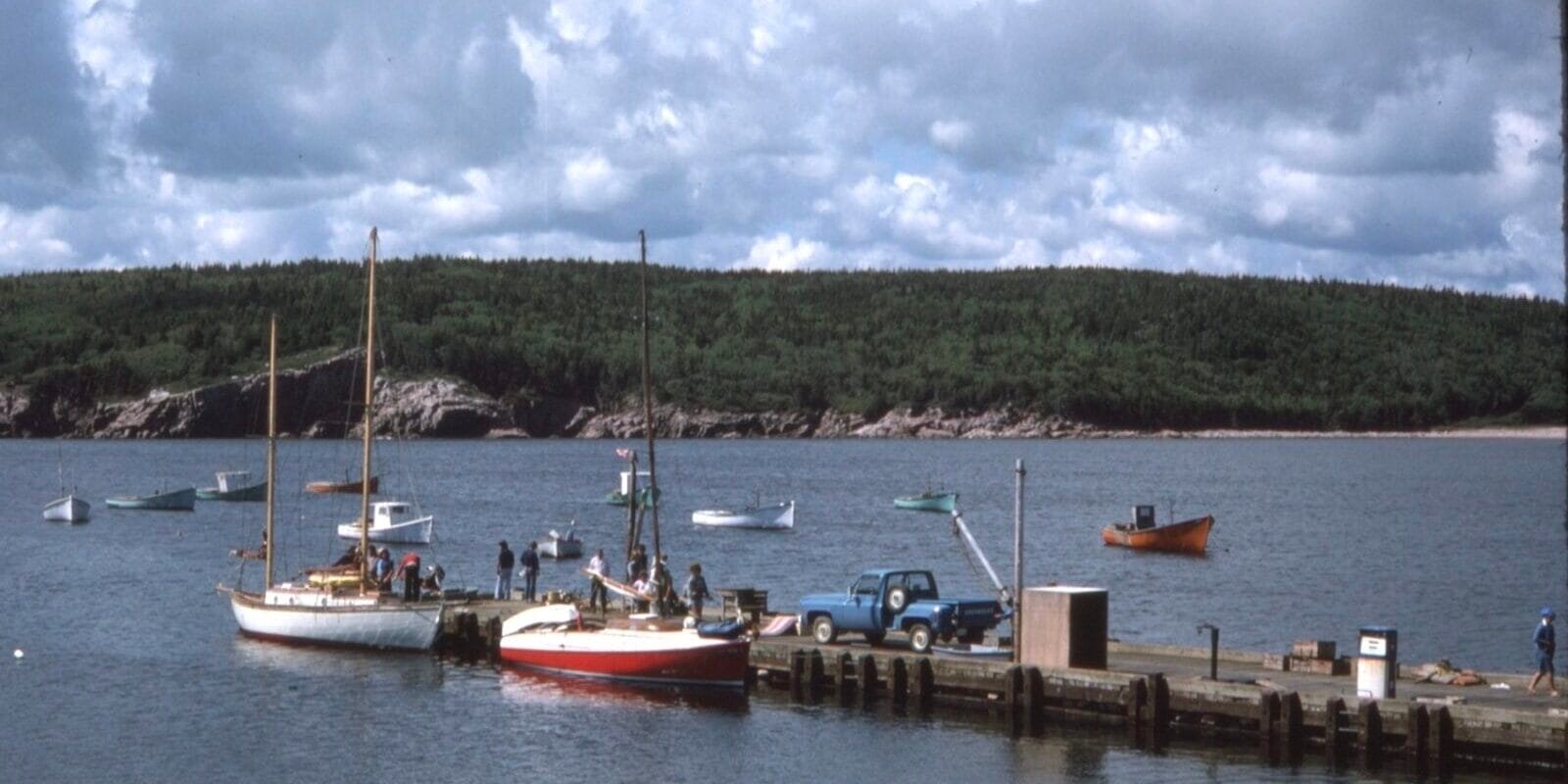This year I turn 70 and my daughter signed me up for Storyworth, which sends a question a week to prompt memories. This week’s question was: What is your favorite story about your father? My father, Robert Bond Snow, Jr. (1928-1987) was an attorney, former blimp pilot, and proud owner of Gypsy. Every summer for a decade or so he loaded his four children on Gypsy for summer sailing adventures from New England to Newfoundland, where he left the boat – after the mast broke – to a sailor in the small town of Come By Chance.
In doing a little research for my story, I remembered my dad was a member of the Atalanta Owners Association. When I visited the Atalanta Owners website, I found gaps in Gypsy’s record and reached out to provide updates.
Our family time on board Gypsy exploring coastlines inaccessible to most pleasure cruisers provided an invaluable legacy and shaped who we Snow siblings are today. Here is what I wrote for Storyworth:
It was not yet 4 am when my father revved up Gypsy’s engine. What on earth was he thinking as he motored out of our quiet anchorage on St. Paul Island – a very small, uninhabited granite outcrop known for its shipwrecks as the ‘graveyard of the Gulf’ 15 miles north of Nova Scotia – and set sail for Newfoundland 44 miles away?
My father had a dream to sail his 26 foot sloop around Newfoundland, including an important stop in Twillingate where the Snow family hailed from. We sailed from Connecticut as far as we could each summer during my father’s vacations. The summer of ’75 we had planned to sail from Baddeck on Cape Breton Island in Nova Scotia to Port Aux Basques on the southwest corner of Newfoundland and make our way east along the southern coast accessible then only by boat and where local villagers still spoke a kind of Elizabethan English. Unfortunately, we were stuck in Baddeck for a couple weeks getting Gypsy seaworthy as each time the 1957 British-built Atalanta was launched, water seeped in a seam down the center of the molded mahogany plywood hull between the two retractable keels. The final solution involved pouring molten pitch inside the hull. We then realized why Canadian Farley Mowat’s The Boat Who Wouldn’t Float was a local bestseller.
Having trialed the repair from Baddeck to Ingonish to Neil’s Harbor, my father was eager to make the crossing. When my brothers and I emerged from our warm sleeping bags, we found fog. According to our 1956 cruising guide, the only available guide at that time which used as a reference A Narrative of a Journey Across the Island of Newfoundland in 1822, ‘On the passage across Cabot Straits fog is likely to be encountered, but it is also likely to be patchy…A strong current in Cabot Strait running out of the Gulf [of Saint Lawrence] is likely to set a vessel to the eastward, which may be perplexing in making the land.’
Luckily, we had enough wind and a full tank of gas for the passage. We had no sophisticated electronics on board and steered by our trusty old compass, hoping our aluminum radar reflector would be detected by passing ships. As the foggy day wore on, my father got out his tiny transistor AM radio to see if he could pick up a station. Sure enough, we were able to find one pointing the radio slightly northwest. This is how we found Newfoundland. We followed that setting and made Port Aux Basques landfall before dark, impressed once again by my father’s resourcefulness and sense of adventure with a hint of lunacy. We left the boat there for the winter, another stop along our journey.



